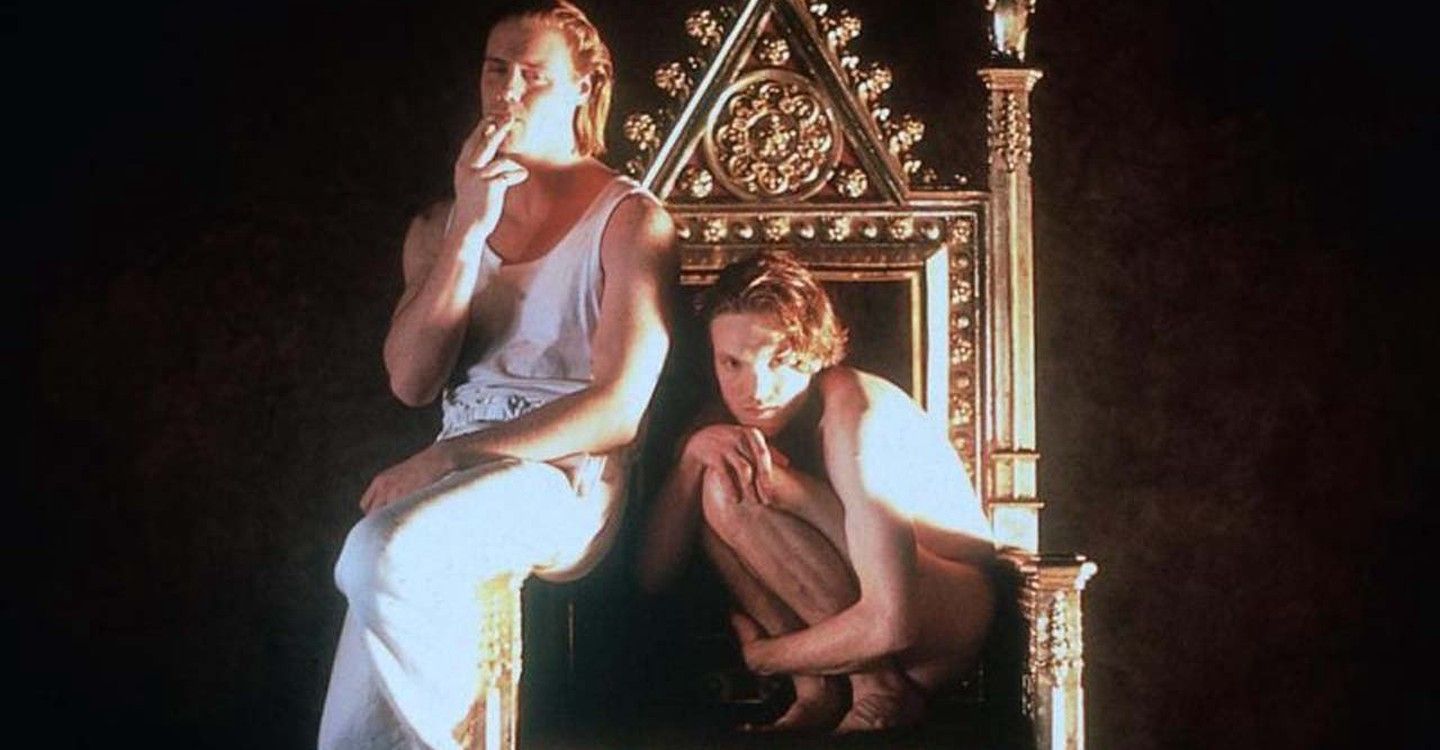
Edward II
Essential Viewing
Derek Jarman’s 1991 film is arguably the boldest adaption of Christopher Marlowe’s Edward II .
Stanley Lawson
Christopher Marlowe’s ‘Edward II’ has spawned numerous adaptations in various art forms, including stage, ballet and opera. Derek Jarman’s 1991 film is arguably the boldest adaption of them all: both a beautiful expression of a postmodern cinematic aesthetic and a deeply political reflection of the gay rights movement of the 1980s and early 90s.
The narrative follows Edward (Steve Waddington) from his accession to the throne upon his elderly fathers death, which sparks the return of his exiled lover Piers Gaveston (Andrew Tiernan), through to his deposition and murder at the hands of his barons and his wife, Queen Isabella (Tilda Swinton), and their own downfall as Edward II’s son, Edward III, comes of age. While all the principal cast are fairly strong in their roles, the film was rightly responsible for, in part, launching Tilda Swinton’s career into mainstream critical recognition. Her performance as the slighted queen whose motivations transform over the course of the film is a stand out. Marlowe’s original Isabella is a victim of her own passions and a piece in the political game but, with an edit of the script, Jarman elevates Isabella to an agent in her own right, giving Swinton much more to work with. Her transition from jilted wife into an inscrutable political power player is a delight to watch. Waddington and Tiernan make convincing lovers, though Waddington only really fulfils the role in the later part of the film, when he perfectly embodies a tragic figure as the fallen king.
As in his previous historical films, Jarman fills ‘Edward II’ with anachronisms, including 20th century costume, props and, perhaps most surprisingly, Annie Lennox singing ‘Everytime We Say Goodbye’ as the King and his lover dance. However, these anachronisms weave together to reflect the conflict of the narrative. Jarman adorns the barons and the Queen with the symbols of 20th century power: the barons meet in a room reminiscent of the Cabinet Room in 10 Downing Street and their costumes bring to mind Tory cabinet ministers of the Thatcher era. The primary antagonist, Mortimer (Nigel Terry), carries a ministerial red box and wears the uniform of a military officer. The Queen, once she has joined the baronial rebels, dresses in ballgowns and is decked out in jewels as an archetypical lady of high society - an image of perfect ‘feminine’ conformity. All this contrasts to the wild and more timeless set and costumes of Gaveston and Edward, which locates them in a different reality to their opponents. The overtly homoerotic scenes which open the film are part of this world - the muscular snake handler is a particularly striking visual sequence which accompanies Gaveston’s first soliloquy. Fundamentally, Jarman aligns the enjoyment of poetry, music and dance with Edward and his lover - their relationship thus stands out as it is the only meaningful and emotional one in the film. The viewer is left with the distinct impression they are living in a world of romance and fantasy, and that their opposition exists in a cold reality.
This explicitly homophobic cold reality is atemporal for Jarman, existing as much in 1991 as it did in 1327. In it, oppressive hypocritical moralising serves to buttress existing power structures. Mortimer’s hypocrisy is one of the character’s most notable traits – he leads a life at least as sexually dissolute as Gaveston, only with women, yet he declares himself as the public defender of the moral order of society from a homosexual king. The gay rights movement makes an appearance as Edward’s ‘army’, being beaten by riot police that compose Mortimer’s forces. The chaotically filmed battle culminates in the execution of queer activists by firing squads, both a literal depiction of the power the state possesses to do harm to minority populations and a metaphorical allusion to the killing of gay men through negligence by the government during the HIV/AIDS crisis. The government is not the only agent of this oppression; as Gaveston leaves to go into exile, he is spat on by lines of clergymen (again, dressed as 20th century vicars rather than 14th century priests) in one of the most viscerally powerful scenes of the whole film.
The politics of the film are not just a fascinating piece of social history, but a cultural fossil left by the gay rights movements of the 1980s. Jarman intended the film to illustrate homophobic power systems throughout time, including the future. Made as he was dying of AIDS, there can be little doubt that he meant this film to be a legacy piece, part of an onward cultural transmission of gay activism. The clarion call to liberation which stands out through the film is one which still resonates. Jarman calls to tear down the moralising power which inflicted so much pain on subversive minorities through the simple act of these minorities living a life of honest and genuine love. Though Jarman died in 1994, the joyfully subversive queer life ‘Edward II’ celebrates lives on, as does the reminder that this life must be defended against persecution by the powerful.